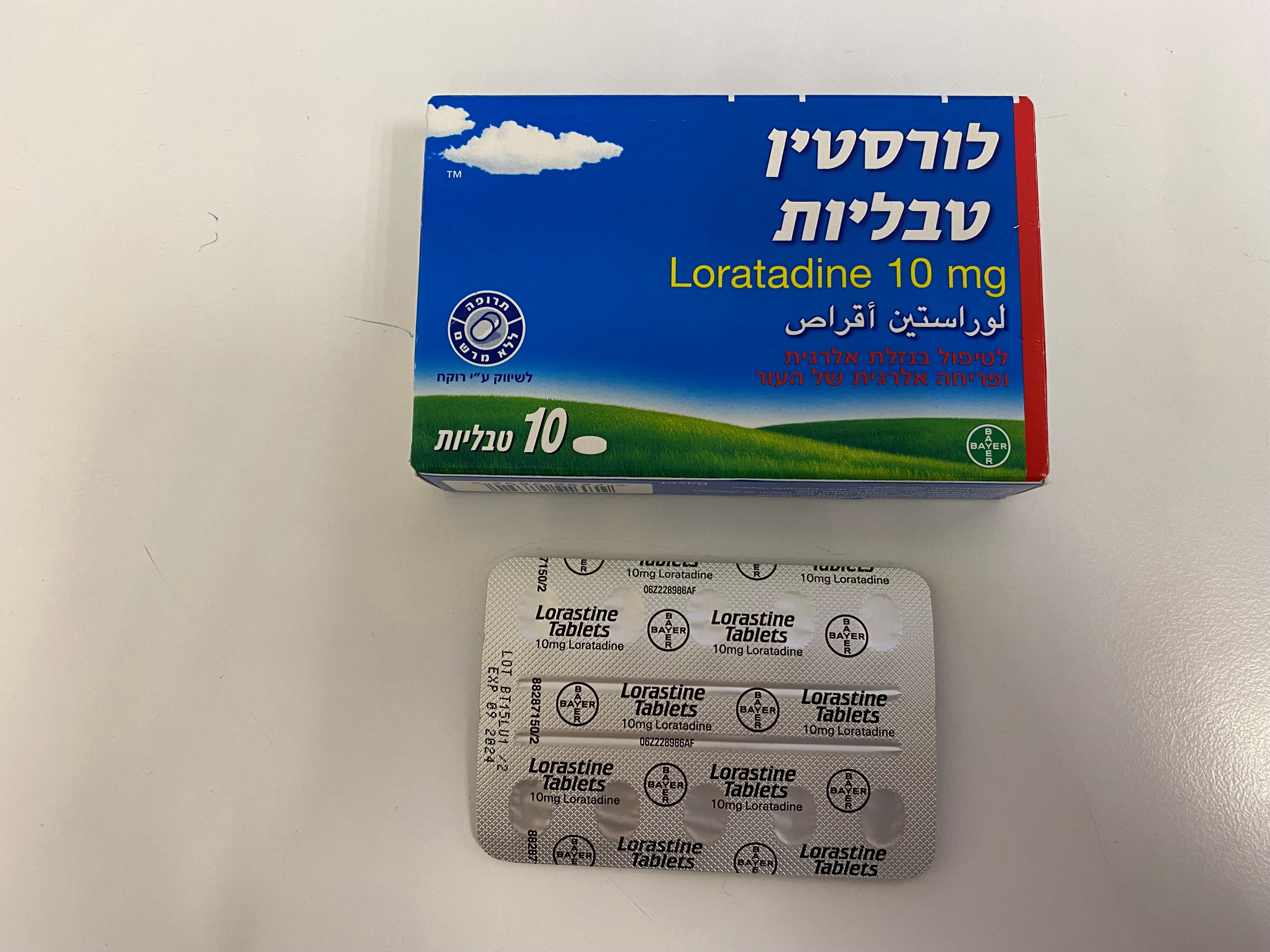Quest for the right Drug

לורסטין טבליות LORASTINE TABLETS (LORATADINE)
תרופה במרשם
תרופה בסל
נרקוטיקה
ציטוטוקסיקה
צורת מתן:
פומי : PER OS
צורת מינון:
טבליה : TABLETS
עלון לרופא
מינוניםPosology התוויות
Indications תופעות לוואי
Adverse reactions התוויות נגד
Contraindications אינטראקציות
Interactions מינון יתר
Overdose הריון/הנקה
Pregnancy & Lactation אוכלוסיות מיוחדות
Special populations תכונות פרמקולוגיות
Pharmacological properties מידע רוקחי
Pharmaceutical particulars אזהרת שימוש
Special Warning עלון לרופא
Physicians Leaflet
Pharmacological properties : תכונות פרמקולוגיות
Pharmacodynamic Properties
5.1 Pharmacodynamic properties Pharmacotherapeutic group: antihistamines – H1 antagonist, ATC code: R06A X13. Mechanism of action Loratadine, the active ingredient in Lorastine tablets, is a tricyclic antihistamine with selective, peripheral H1-receptor activity. Pharmacodynamic effects Loratadine has no clinically significant sedative or anticholinergic properties in the majority of the population and when used at the recommended dosage. During long-term treatment there were no clinically significant changes in vital signs, laboratory test values, physical examinations or electrocardiograms. Loratadine has no significant H2-receptor activity. It does not inhibit norepinephrine uptake and has practically no influence on cardiovascular function or on intrinsic cardiac pacemaker activity. Human histamine skin wheal studies following a single 10 mg dose has shown that the antihistamine effects are seen within 1-3 hours reaching a peak at 8-12 hours and lasting in excess of 24 hours. There was no evidence of tolerance to this effect after 28 days of dosing with loratadine. Clinical efficacy and safety Over 10,000 subjects (12 years and older) have been treated with loratadine 10 mg tablets in controlled clinical trials. Loratadine 10 mg tablets once daily was superior to placebo and similar to clemastine in improving the effects on nasal and non-nasal symptoms of AR. In these studies somnolence occurred less frequently with loratadine than with clemastine and about the same frequency as terfenadine and placebo. Among these subjects (12 years and older), 1000 subjects with CIU were enrolled in placebo controlled studies. A once daily 10 mg dose of loratadine was superior to placebo in the management of CIU as demonstrated by the reduction of associated itching, erythema and hives. In these studies the incidence of somnolence with loratadine was similar to placebo. Paediatric population Approximately 200 paediatric subjects (6 to 12 years of age) with seasonal allergic rhinitis received doses of loratadine syrup up to 10 mg once daily in controlled clinical trials. In another study, 60 paediatric subjects (2 to 5 years of age) received 5 mg of loratadine syrup once daily. No unexpected adverse events were observed. The paediatric efficacy was similar to the efficacy observed in adults.
Pharmacokinetic Properties
5.2 Pharmacokinetic properties Absorption Loratadine is rapidly and well-absorbed. Concomitant ingestion of food can delay slightly the absorption of loratadine but without influencing the clinical effect. The bioavailability parameters of loratadine and of the active metabolite are dose proportional. Distribution Loratadine is highly bound (97 % to 99 %) and its active metabolite desloratadine (DL) moderately bound (73 % to 76 %) to plasma proteins. In healthy subjects, plasma distribution half-lives of loratadine and its active metabolite are approximately 1 and 2 hours, respectively. Biotransformation After oral administration, loratadine is rapidly and well absorbed and undergoes an extensive first pass metabolism, mainly by CYP3A4 and CYP2D6. The major metabolite -desloratadine (DL)- is pharmacologically active and responsible for a large part of the clinical effect. Loratadine and DL achieve maximum plasma concentrations (Tmax) between 1–1.5 hours and 1.5–3.7 hours after administration, respectively. Elimination Approximately 40 % of the dose is excreted in the urine and 42 % in the faeces over a 10 day period and mainly in the form of conjugated metabolites. Approximately 27 % of the dose is eliminated in the urine during the first 24 hours. Less than 1 % of the active substance is excreted unchanged in the active form, as loratadine or DL. The mean elimination half-lives in healthy adult subjects were 8.4 hours (range = 3 to 20 hours) for loratadine and 28 hours (range = 8.8 to 92 hours) for the major active metabolite. Renal impairment In patients with chronic renal impairment, both the AUC and peak plasma levels (Cmax) increased for loratadine and its active metabolite as compared to the AUCs and peak plasma levels (Cmax) of patients with normal renal function. The mean elimination half-lives of loratadine and its active metabolite were not significantly different from that observed in normal subjects. Haemodialysis does not have an effect on the pharmacokinetics of loratadine or its active metabolite in subjects with chronic renal impairment. Hepatic impairment In patients with chronic alcoholic liver disease, the AUC and peak plasma levels (Cmax) of loratadine were double while the pharmacokinetic profile of the active metabolite was not significantly changed from that in patients with normal liver function. The elimination half-lives for loratadine and its active metabolite were 24 hours and 37 hours, respectively, and increased with increasing severity of liver disease. Elderly The pharmacokinetic profile of loratadine and its active metabolite is comparable in healthy adult volunteers and in healthy geriatric volunteers.

שימוש לפי פנקס קופ''ח כללית 1994
Symptomatic relieve of allergy such as hay fever, urticaria
תאריך הכללה מקורי בסל
01/01/1995
הגבלות
תרופה שאושרה לשימוש כללי בקופ'ח
מידע נוסף
